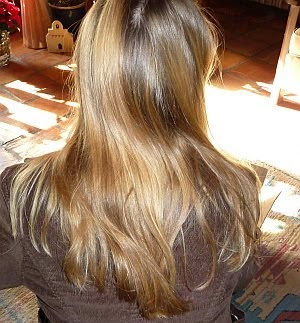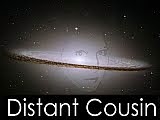Here are some more examples of the multi-layered Panamanian molas that Ana loves so. (The first installment is here.) No matter what planet one is from, anyone with an eye for color and design will be understandably struck by these gorgeous works of art.
Ana particularly loves the zest for life embodied in these works (and in the arpilleras and other Latin-American art elsewhere on her blog). Many reveal a fascination for human, animal, and plant forms--art that springs from nature, in other words. Some may dismiss it as "folk art," but to Ana, whose ancestors on Thomo barely survived hard times, there is no more precious, more cherished, force in the world than life itself.
Above is a mola turned into a lined vest by someone who labeled it for sale. This is not typical of most molas, which generally seem not to have been created with commercial purposes in mind. Below are more typical examples of this amazing art form. (Click for more detail.) First, a jungle scene with a boat and at least five human figures:
Here are a bat, we believe, and a bird, in molas that were "repurposed" and sold after their owners felt they had fulfilled their original use:
This is one of the more extraordinary molas Ana knows of. We do not know how old this artwork is, but it's possible that the artist could have created it after having seen her first helicopter:
Here is a detail from the mola above to show the fine stitching:
Finally, here is a mola which depicts something we cannot identify. After that photo there is another of the same mola from the back, and then a detail of the back. Quilters, textile enthusiasts, and artists in general will be fascinated to examine how these unique works were created.
See more of Ana's favorite art, music, and poetry in the column to the right, under the photo of the LOVE sculpture-->
The mola, part 1
Arpilleras, part 1, part 2
Mexican dolls: handmade folk art!
Wearable art from Mexico, Guatemala, and Ecuador
Mexican dolls: handmade folk art!
Wearable art from Mexico, Guatemala, and Ecuador
Meet Ana Darcy!
A reader comments: "The essence of Spielberg's Close Encounters or E.T. remains pervasive throughout. The characters and dialog tell the story. The whole thing is show, don't tell in a manner that any reader can appreciate. The storyline flows, the characters develop comfortably, and you feel as if you are so glad that you know these people!"
A reader comments: "The essence of Spielberg's Close Encounters or E.T. remains pervasive throughout. The characters and dialog tell the story. The whole thing is show, don't tell in a manner that any reader can appreciate. The storyline flows, the characters develop comfortably, and you feel as if you are so glad that you know these people!"













































